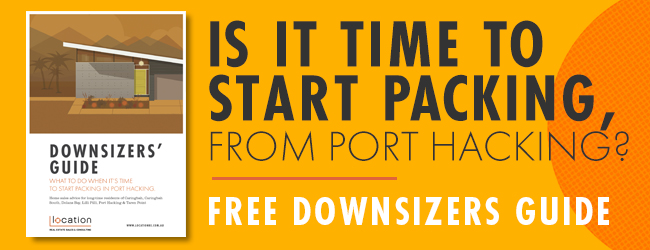If you were born in the 1950s or earlier, strap yourself in for a trip into the past.
When it comes to our homes, I’m often reminded of the story of the frog in the pot of water on the stove. Changes have been so incremental, it’s hard to remember where we’ve come from. But take a few minutes to remember our homes in the 1960s and the 1970s.
The early ‘60s home was characterised by echoes of the 50s, with Modernist influences (Fler furniture, anyone?), Axminster carpet and lino-floored kitchens.
However, technology played a key role in the development of the Australian lifestyle.
The 1960s
From the 1960s, these items became staples in almost every household:
1. Transistor radios: Every teen’s and dad’s dream. A transistor was portable, and you could add earphones to take your music (or your sports results and horse races) with you wherever you went.
2. Cassette recorders: Small, compact and efficient, with a built-in microphone, the cassette recorder in most households was used to record ‘letters’ to grandparents.
3. Polaroid cameras: The era of instant photography. The Polaroid fell out of favour with the advent of digital cameras but is making a come-back among the young hipster crowd.
4. Digital watches: Not content with an analogue watch, pre-teens and teens went crazy for these watches (though I could count on the fingers of one hand the number of times I’ve needed to know it’s exactly 3.17 pm).
5. Teasmade: A combination kettle and alarm clock, the Teasmade product was a popular gift for grandparents in the 1960s, most of whom used it once before stowing it as users felt it didn’t brew the tea to their satisfaction. They’re still available, though now made in China and distributed through Swan.
6. Tupperware: From 1961, Australia saw the blossoming of Tupperware parties across the Sutherland Shire. By the late 1970s, many housewives had moved into work outside the home and the Tupperware party lost its main audience. However, there has been a revival recently.
Enter the 1970s and the world went orange – or at least, it seemed as if it had. With Psychedelia a dominant theme in popular culture, manufacturers chose the colour of the zeitgeist – orange kitchens, orange kitchen appliances, orange curtains, orange furniture coverings, orange furniture.
The 1970s also brought us the following:
- Parker furniture: Inspired by his experience in London and the Scandinavian style, Tony Parker persuaded his father to produce the new style.
- Pine furniture
- Space age modular furniture
- Marimekko fabric
- Teflon-coated non-stick pans
- Vertical grill
- K-tel record selector ‒ because it was so hard to flip through those albums.
- Tumble dryer: although we’d had drying cabinets, the tumble dryer had been a feature of laundromats until the 1970s when it became a household fixture
- Spider plants: replacing the dowdy aspidistras and rubber plants, spider plants became de rigueur in Australian households, not least because we could grow more plants from every ‘spider’.
- Funk & Wagnall encyclopaedias.
- Black-and-white TV (until 1975).
- Beanbags: Made a clear delineation between the parents’ area (Parker furniture) and the teenagers’ space.
- Push button phone (probably in avocado): If your push-button phone was wall-mounted, you had it made. Never mind it would be another 20-odd years before pushing buttons ‘dialled’ the number faster than the old rotary phone.
- Pottery: Pottery was an industry in the 1970s, with pottery everything: candle holders, pot planters, mugs, plates; you name it, it was pottery. Planters were often swinging from a ceiling hook in macramé.
- Macrame: If it wasn’t your household, I’m sure you knew of one where it seemed every household member was fiddling with string.
- Crockpots: Why bother coming home and cooking in the evening when you could throw everything into a slow cooker and come home to a cooked meal?
- Fondue pots: So many were sold for engagement or wedding gifts but how many were ever used?
- Door chimes ‒ because door knockers and bells were so 1950s.
- TV trays ‒ because we couldn’t miss our favourite programs.
- Waterbeds: Unwieldy and a nightmare if they sprang a leak, the waterbed became synonymous with the 1970s.
- Lava lamps: A 1970s feature, they’re ‘retro’ these days and not uncommon in hip households.
The lists above are just what I’ve retrieved from my memory bank. What household staples made the most impact on your life?
Can we help with advice on downsizing?
Having navigated the home sale and downsizing process not only for our real estate clients but also for members of our own family, it’s an area in which we’ve amassed a wealth of knowledge. So don’t hesitate to seek out our help – no obligations.
